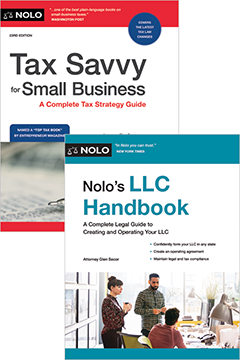A well drafted Funds Flow Memorandum (FFM) can help ensure the smooth exchange of funds when parties are required to exchange payments simultaneously.
As a business owner, you might someday find yourself involved in a transaction where different parties are required to receive or exchange payments simultaneously. Similarly, sometimes a transaction is structured so that certain parties receive their payments sequentially, but in fairly rapid succession. Consider the following examples:
- Business acquisitions. There are many ways to buy a business. One option for acquiring a company is via a stock sale, in which case all of the selling stockholders will likely insist on being paid at the same time for their shares.
- Fundings. In connection with receiving a small business loan, your company could simultaneously pay off either a third-party creditor, departing shareholder, settlement claim, landlord, or some other third-party claim. For more information on small business loans, see How to Negotiate a Loan Agreement for Your Business.
- Joint ventures. Joint ventures frequently involve the infusion of capital by one or more parties. Sometimes the willingness of one party to make their investment will be conditioned on the prior removal of certain liabilities. As such, the initiation of the joint venture could involve the simultaneous (or immediately sequential) satisfaction of either existing obligations between the parties or outstanding third party claims (see Five Questions to Ask Before Forming a Joint Venture).
For transactions where multiple payments must be made roughly within the same time frame, the preparation of a funds flow memorandum (an FFM) can facilitate the ability of the parties to exchange payments either concurrently, or as concurrently as possible. The FFM will include all relevant information regarding these fund transfers and ensure that all the parties are on the same page with respect to the amounts and purposes of these distributions.
Describe the Transaction
It's often helpful to begin an FFM by generally describing the purpose and structure of the deal. This description should reference any relevant underlying agreements or primary deal documents. This compels the parties to come to definitive consensus about the goals of the transaction. It can also serve as a probative documentation for any underlying tax purposes.
Sources of Funds
The next section of the FFM should be entitled "Sources" and include a description of the various individuals, financial institutions, or other entities that will be sending funds (the sending parties), as well as the aggregate amount to be transmitted by each sending party.
Uses of Funds
The "Uses" section of the FFM is the most critical portion of the document. It should sequentially list each party that is to receive funds in connection with the transaction (the receiving parties), as well as the amounts to be delivered to each. Each receiving party should also list its banking information in detail so that there is full agreement regarding wire instructions or other payment methods (including PayPal, credit card, intra-bank transfer, check, hand delivery, or some other method). This also reduces the likelihood of funds being held up due to incorrect information, typos, and so forth.
Note that the Uses section should also describe the conditions governing any sequential payments. In other words, if a payment is supposed to be received and confirmed before a subsequent payment can be sent, then the FFM must make this clear, with as much detail as possible.
Banking Information
The following is an example of the banking information that the Uses section can include for each receiving party (regarding wire transfers):
Account Beneficiary:
Beneficiary Address:
Beneficiary Phone:
Bank Name:
Bank Address:
ABA (Routing) No:
Account No:
SWIFT Code:
Bank Officer Name:
Bank Officer Phone:
Ref # (if applicable):
Special Instructions (if applicable):
Note that any receiving parties who reject payment by wire transfer will have to provide you with the relevant information to include in the Uses section regarding their preferred method of funds transmittal.
Before the receiving parties provide their banking details or other transfer information to the drafter of the FFM, they should confirm with their banker (or other relevant representative) that all of their information is correct. Note that wiring instructions might sometimes vary based on the type of sending or receiving account or whether funds are being transmitted domestically or internationally.
Furthermore, because banking coordinates involve sensitive information, it's possible that one or more of the parties won't be willing to disclose their details to certain other parties. In such cases, the FFM can include as much information as the concerned party is willing to share, with the remaining parts redacted. However, the document should make it clear that, because the information in the FFM is incomplete, the concerned party will be fully responsible for any delays involved in the receipt of their funds. Furthermore, the FFM can provide that the concerned party will forward the missing information to the relevant sending party under separate cover.
Payment Confirmation Information
The next section of the FFM should include instructions for the confirmation of each transfer. The following is some sample language for wire transfers:
"As soon as available, please provide Federal Reserve confirmation numbers to [name of recipient] at [name of company (if applicable)] at (___) ___-____ and via email at _________@________."
The purpose of this section is to provide the receiving parties with legitimate evidence that their payment has been made and is en route.
Contact Persons
Designate contact persons for the parties to reach out to in the event they have any questions or comments regarding the FFM. These contact persons are typically whomever is responsible for putting together the FFM, or their legal counsel, as applicable.
Signatures
Finalize the FFM by adding proper signature blocks for each receiving and sending party, based on whether they're an individual or an entity. Then have all of the parties sign and exchange copies of the fully executed document. If necessary or desired, feel free to allow the parties to execute the FFM by PDF, fax, or electronic signature.



